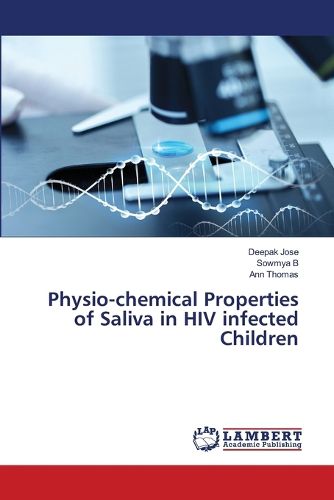Readings Newsletter
Become a Readings Member to make your shopping experience even easier.
Sign in or sign up for free!
You’re not far away from qualifying for FREE standard shipping within Australia
You’ve qualified for FREE standard shipping within Australia
The cart is loading…






"Saliva lacks the drama of the blood, the sincerity of sweat and the emotional appeal of tears" (Mandel 1990) Saliva promotes oral health and hence lack of its secretion contributes to disease process. Alteration in physiochemical properties of saliva such as decreased salivary flow rate, pH, buffering capacity and calcium play a major role in the development of dental caries. The World Health Organization (WHO) estimates that there are 1,600 babies born each day with HIV (Human Immunodeficiency Virus), while 7,000 youths between 10 to 24 years of age are infected on a daily basis. Of particular concern are the 15.7 million HIV-infected women, many of whom are of child-bearing age and are capable of transmitting this virus vertically to their offspring. Children with perinatally acquired HIV are at greater risk for caries than their siblings.
$9.00 standard shipping within Australia
FREE standard shipping within Australia for orders over $100.00
Express & International shipping calculated at checkout
"Saliva lacks the drama of the blood, the sincerity of sweat and the emotional appeal of tears" (Mandel 1990) Saliva promotes oral health and hence lack of its secretion contributes to disease process. Alteration in physiochemical properties of saliva such as decreased salivary flow rate, pH, buffering capacity and calcium play a major role in the development of dental caries. The World Health Organization (WHO) estimates that there are 1,600 babies born each day with HIV (Human Immunodeficiency Virus), while 7,000 youths between 10 to 24 years of age are infected on a daily basis. Of particular concern are the 15.7 million HIV-infected women, many of whom are of child-bearing age and are capable of transmitting this virus vertically to their offspring. Children with perinatally acquired HIV are at greater risk for caries than their siblings.